Are you looking for a Himalayan experience in Nepal and still can’t figure out which trek to choose?
Let me help you make the decision by introducing a fourteen days trekking that has a perfect blend of spectacular nature, mighty mountain views and unique cultural vibes | The Manaslu Circuit Trek
Manaslu circuit trek overview
Manaslu circuit trek quick facts
Manaslu circuit trek distance | 177 km - 110 miles Days | 13 - 19 Highest Elevation | 5106 m - 16725 ft Difficulty | Moderate Permits | Manaslu RAP, MCAP & ACAP Guide | Mandatory Accommodation | Teahouse Cost | USD 900 - 2000
Manaslu circuit trek highlights
- Varied landscape from 900 m / 2953 ft to 5167 m / 16952 ft
- Rich culture of Nepalese and Tibetan Buddhism
- Circular trek route with Larkya la pass connecting Gorkha and Manang
- Stunning view of Mt. Manaslu – 8th highest mountain in the world
- Plenty of side trips to choose from to make 13 to 19 day trip
- Comparatively less crowded than other mainstream treks
Manaslu circuit trek photos

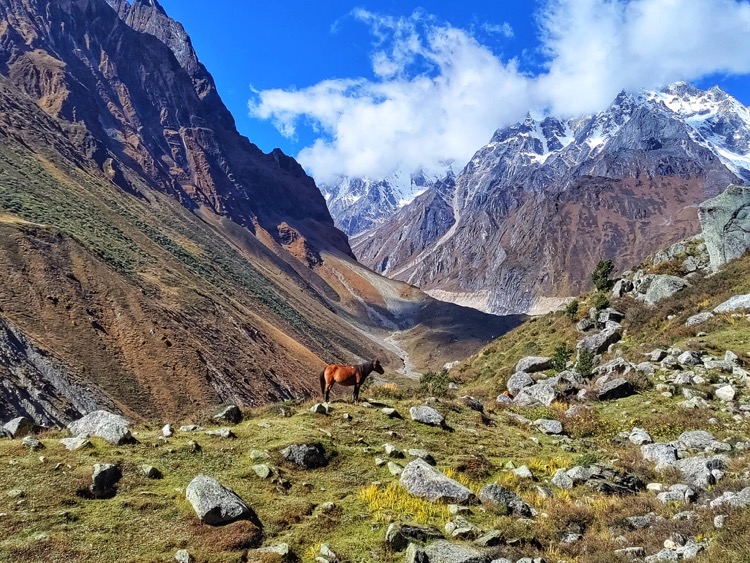
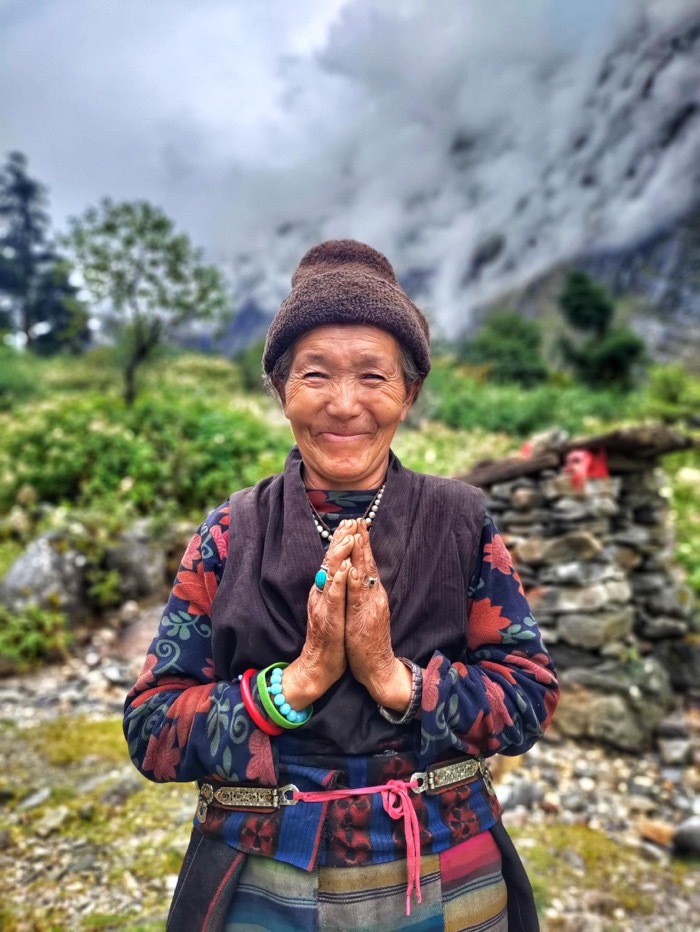




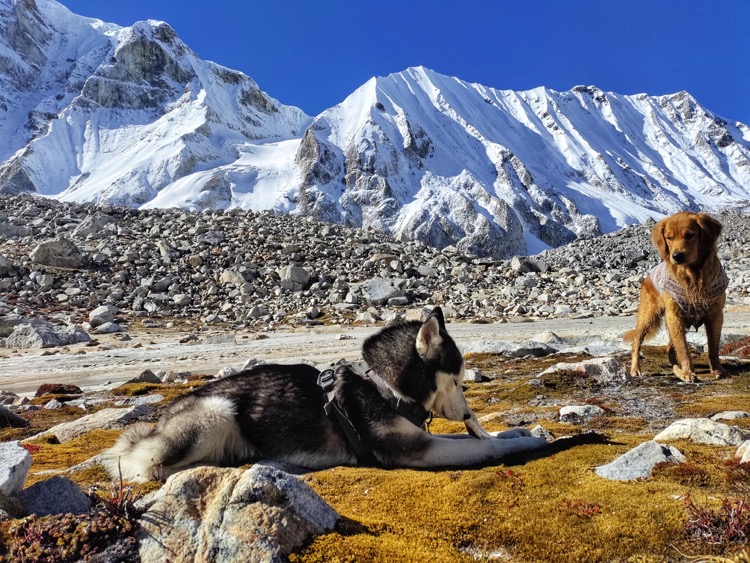
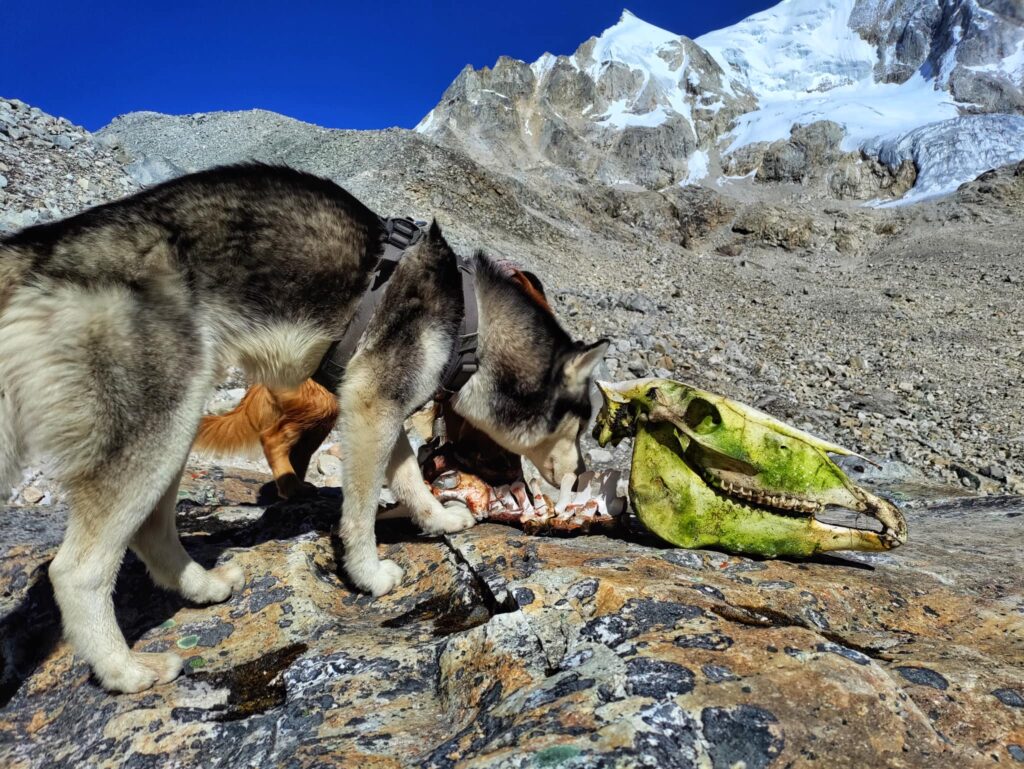
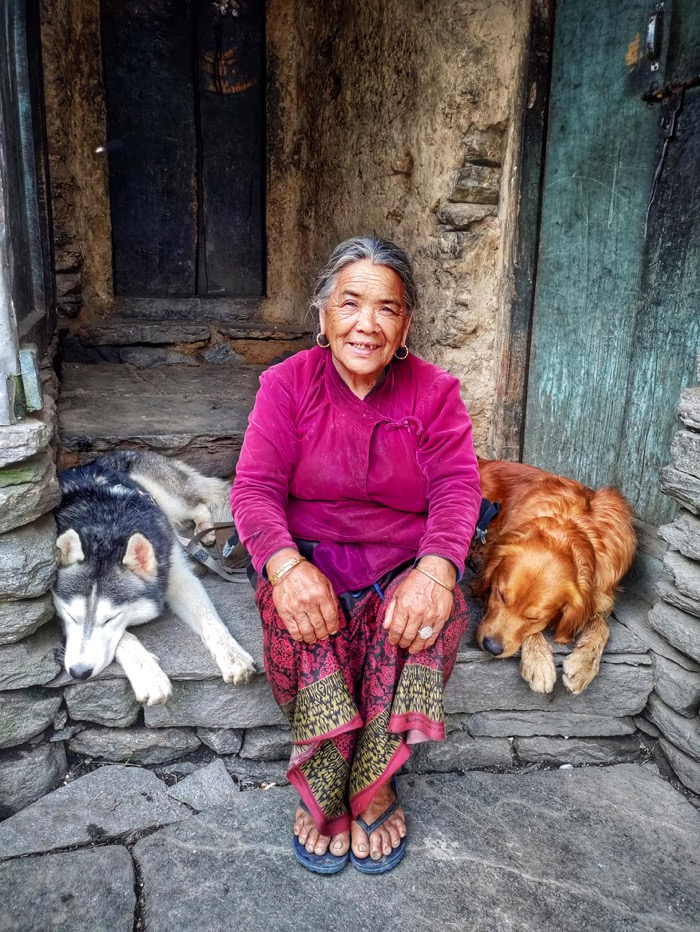

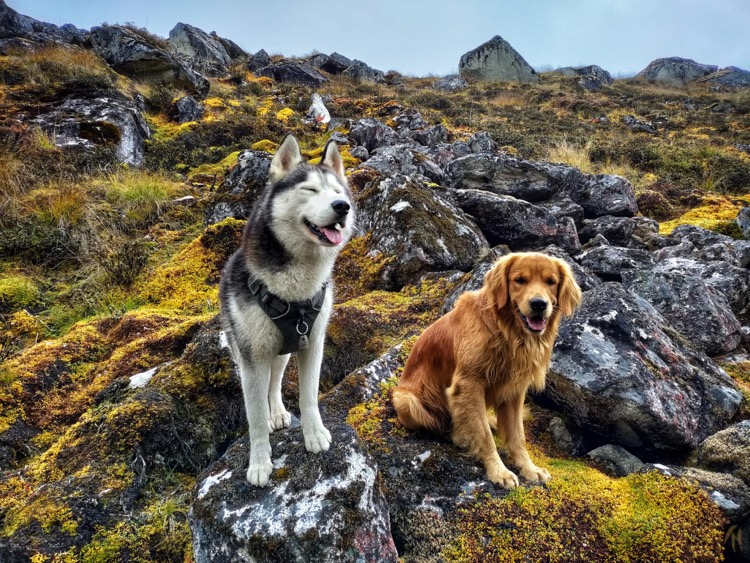
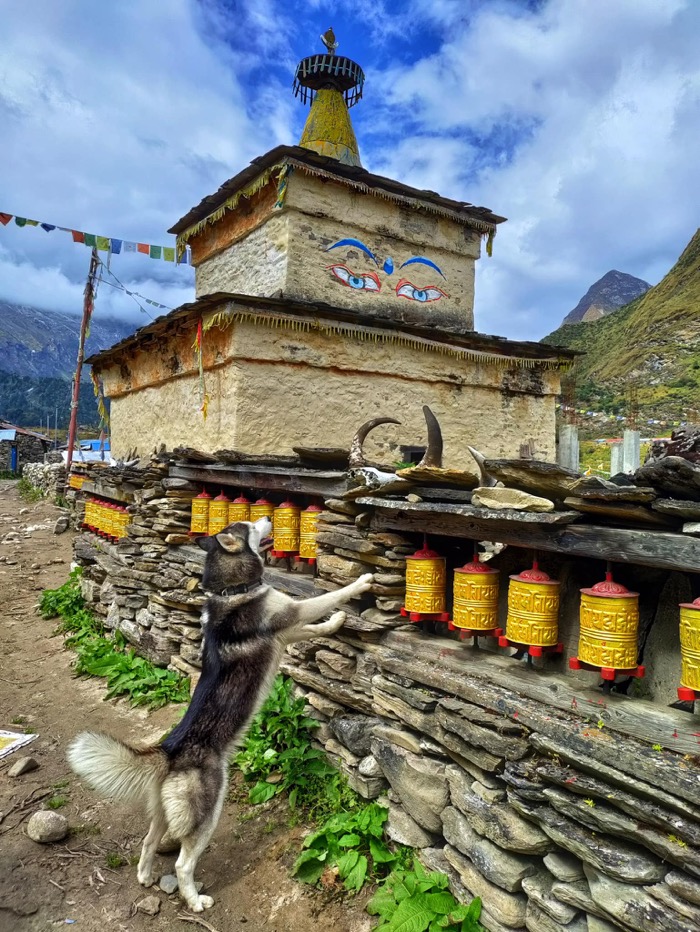




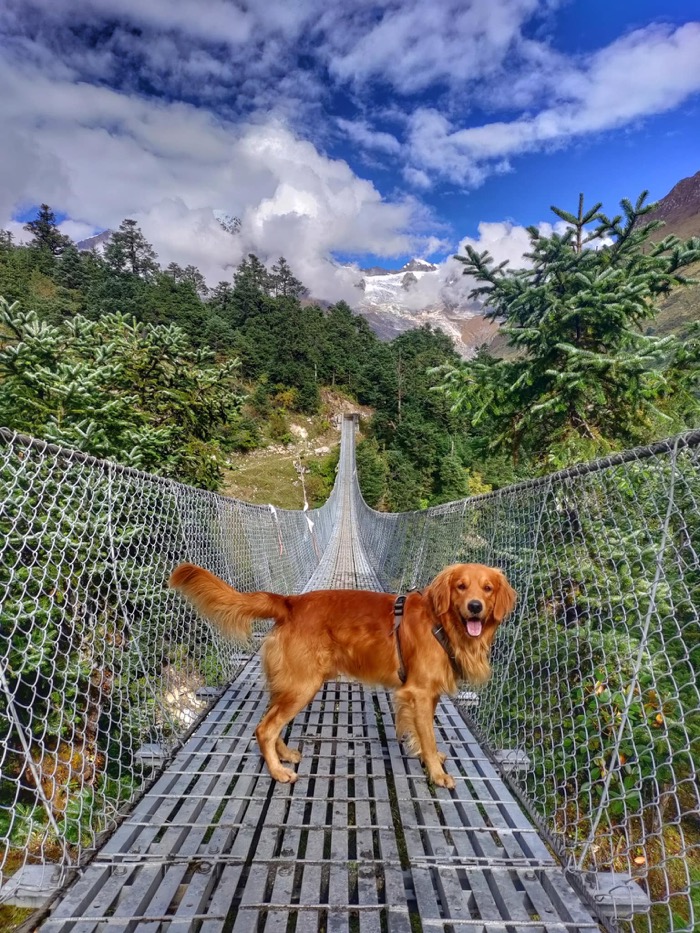
Do check AWD OUTDOOR out on Instagram to see our adventure other than Manaslu circuit trek.
Where is Manaslu?
Manaslu is located in Gorkha district, about 150 km to the north west of Kathmandu.
Manaslu circuit trek usually starts at Soti Khola 730 m. With the roads being expanded, as of the end of 2022, you can actually start a bit higher up at 930 m from Machha Khola.
The Manaslu circuit trek will take you anti clockwise around the world’s 8th highest mountain – Manaslu, ending in Dharapani.
How to hike Manaslu circuit?
Unlike other treks in Everest, Annapurna or Langtang Region, where trekkers are allowed to trek independently, with Manaslu circuit trek a guide’s company is required, and permits must be applied through a local agency, with a minimum of two trekkers for permit issuance.
Booking Manaslu circuit trek through an agency
For a hassle free trip, it’s best to book Manaslu circuit trek through a reputed trekking agency. They’ll take care of everything from permits, transportation to food, accommodation during the Manaslu circuit trek.
Hiring a guide and or a porter for Manaslu circuit trek
If you already have good recommendations for a guide and porter you can also have the option of hiring them only. But please bear in mind that individual freelance guide cannot issue permits for Manaslu circuit trek without going through a local agency.
From my experiences of doing Manaslu circuit trek twice in mid autumn and early winter, I’ll explain things in details what you should know for the trip.
Manaslu circuit trek itinerary
Depending on your time and interest, you can add any side trips along the way, or just do the regular Manaslu circuit trek. This time I have done it a total of 18 days Manaslu circuit trek Kathmandu to Kathmandu, so a sixteen days of hiking and two days of driving.
Watch this video as I hike the Manaslu circuit trek, you can watch it on YouTube too.
Manaslu circuit trek 18 days outline itinerary
| Day 01 | Drive from Kathmandu to Soti Khola |
| Day 02 | Drive from Soti Khola to Machha Khola to Lapu Beshi |
| Day 03 | Lapu Beshi to Jagat |
| Day 04 | Jagat to Chisapani |
| Day 05 | Chisapani to Bihi |
| Day 06 | Bihi to Serang Gompa |
| Day 07 | Serang Gompa |
| Day 08 | Serang Gompa to Prok via Bihi |
| Day 09 | Prok to Kaal Taal to Jungle |
| Day 10 | Jungle to Namrung |
| Day 11 | Namrung to Hinang Gompa |
| Day 12 | Hinang Gompa to Shyala |
| Day 13 | Shyala to Sama Gaun via Pungyen Gompa |
| Day 14 | Day trip to Pungyen Gompa |
| Day 15 | Sama Gaun to Samdo |
| Day 16 | Samdo to Dharmashala |
| Day 17 | Dharmashala to Bimthang via Larkya Pass |
| Day 18 | Bimthang to Dharapani and drive to Beshi Sahar |
Note: At the end of my Manaslu circuit trek I stayed in Begnas Lake near Pokhara for few days before driving back to Kathmandu.
Alternative Manaslu circuit trek itinerary and side trips
In a regular fourteen days Manaslu circuit trek itinerary there will be two acclimatization days in Sama Gaun and Samdo. From Sama Gaun you can choose either Pungyen Gompa or Manaslu Base Camp to visit as a day trip. In Samdo, you can hike up to Tibet Border.
Manaslu circuit trek 14 days itinerary
| Day 01 | Drive from Kathmandu to Soti Khola |
| Day 02 | Soti Khola to Machha Khola |
| Day 03 | Machha Khola to Jagat |
| Day 04 | Jagat to Deng |
| Day 05 | Deng to Namrung |
| Day 06 | Namrung to Lho |
| Day 07 | Lho to Sama Gaun |
| Day 08 | Acclimatization day |
| Day 09 | Sama Gaun to Samdo |
| Day 10 | Acclimatization day |
| Day 11 | Samdo to Dharmashala |
| Day 12 | Dharmashala to Bimthang via Larkya La Pass |
| Day 13 | Bimthang to Dharapani |
| Day 14 | Dharapani to Kathmandu drive via Beshi Sahar |
Update: As of now the road is expanding north to Sama Gaun. You can easily drive to Machha Khola to start your Manaslu circuit trek making the trip of a total 13 days!
i.e. Day 1 Drive from Kathmandu to Machha Khola
If you want to spend more time on the Manaslu circuit trek I would definitely recommend Serang Gompa and Kaal Taal as side trips. Since they’re completely off the main trail, you’ll need two extra days for each trip.
Serang Gompa
Serang Gompa (Monastery) is located straight east from Bihi village right on the border with Tsum Valley. I spent the night at Bihi before hiking for 5 – 6 hours to the monastery the following day. Brace yourself for the climb as it is no joke. Some parts are steep up & you really don’t want to look down while climbing.
However, the journey there and the destination are so worth it I promise you.
Serang monastery is truly a hidden gem, almost secluded at an elevation of 3100 m with magnificent white mountain backdrops. The monastery has a separate building & kitchen used to cater guests. Accommodation is spacious and comfortable and the food prepared by the monks is just amazing.
I’m sure you’ll find a stay in Serang Gompa and unique way to experience Buddhism in the Himalayas.
Kaal Taal
Kaal Taal is a lake located at 3800 m straight west from Bihi. From the village you will be passing by Prok another beautiful mountain settlement, where I chose to be the base for my day trip to the lake the next day. The walk to the lake is a pleasant moderate one under forest shades. It also offers excellent view of Manaslu once you climb up from Prok village.
Very few trekkers choose to include these destinations in their itinerary so most of time you’ll have the whole trail to yourself, like I did, which was truly amazing.
Tsum Valley
If you have a whole extra week on top of the regular fourteen day for Manaslu circuit trek, another suggestion would be adding Tsum Valley to your itinerary. For this, separate permits are required, as listed in permits section above. Tsum Valley is more about cultures and monasteries. The area is quite secluded, with road access usually gets blocked due to heavy rain during monsoon.
From Tsum Valley you can get an excellent view of Ganesh Himal considered to be a holy mountain by both Hindu and Buddhist.
Read our separate guide for Tsum valley trek here.
How much money do I need for Manaslu circuit trek?
The cost of Manaslu circuit trek depends on different factors, mainly on the style of trek you are doing (Booking a full board package tour through an agency or hiring your own guide/porter), the number of days you spend on the trail and the season you are trekking.
Booking a Manaslu circuit trek with a local agency is a good idea if you don’t want to take any hassle arranging logistics for the trip. A fourteen day trek including guide, accommodation, food and transportation would be somewhere around USD 900. Usually drinks during the trek and tips for your guide/porter are not included in this price.
A cheaper option for Manaslu circuit trek is to hire a guide/porter, pay their salary and take care of your own expenses during the trek. This is what I did and with my experience doing Manaslu circuit twice in 2019 and 2022 I am going to give you the breakdown of my total trek cost.
Transportation
The start point of Manaslu circuit trek used to be Soti Khola but thanks to road expansion, you can drive up to Maccha Khola and start walking from there.
There are local buses running Kathmandu to Soti Khola leaving from Dhading bus station (Near the Gongabu bus park) in the morning 6:30 – 8:00 am. Bus ticket costs around USD 10 – 12. Not all the buses will run directly to Soti Khla, some will stop in Arughat and you can easily switch to a different bus to Soti Khola then.
There’s also a night bus option and it goes all the way up to Machha Khola. This is best if you are under time constraint.
Please bear in mind these buses are not up to tourist bus standard and a rough ride is guaranteed.
For a more comfortable drive you can choose private jeep, which can fit up to seven people and costs around USD 200 to Soti Khola or USD 250 to Maccha Khola. You can pick your departure time and the jeep can pick you up at your hotel. However, it is recommendable to start no later than 8 am to avoid traffic.
Normally after finishing the last trekking day and spending the night in Dharapani, trekkers would find a jeep to Besi Sahar the next morning. Since there are frequent local jeeps running between Dharapani and Besi Saha you won’t have any problem finding one, costing around USD 18 – 20. Or you can reserve the whole jeep for USD 120 – 150.
From Besi Sahar, there are multiple routes you could choose to travel. If you are going back to Kathmandu, there are options of local bus USD 12 or private car USD 120 – 140.
Some people choose Pokhara as their next destination to wind down after a long trek. The costs for local bus and private car to Pokhara are USD 10 and USD 100 – 120 respectively.
If you’re into wildlife activities then traveling south to Chitwan is a great idea. The transportation costs are similar to those of Pokhara.
Trekking permits
There are three types of permits needed for Manaslu circuit trek.
1. Restricted Area Permit (RAP):
This varies upon seasons. For the month of September to November, the permit fee is USD 100 for the first 7 days and extra USD 15 per day after that. For the remaining months, the fee is USD 75 for the first 7 days and USD 10 per day for extra days. This special permit can only be issued through a trekking agency with a minimum of two trekkers.
2. Manaslu Conservation Area Permit (MCAP):
There’s no time restriction for this permit and it costs NPR 3000 per person, you need to provide a passport size photo for this permit.
3. Annapurna Conservation Area Permit (ACAP):
Even though the majority of the trek lies in Manaslu conservation area, the last trekking day ends in Dharapani, which falls under Annapurna conservation area, that’s the reason you need an ACAP. Similarly, for this permit, there’s no time restriction, it costs NPR 3000 per person and a passport size photo must be provided.
Note: If you are planning to cover Tsum valley, additional permit is required at USD 40 for the seven days in autumn and USD 30 in other seasons. After the first seven days, permit will cost USD 7 per person per day in autumn and in other seasons.
Note: All permits for Manaslu circuit trek are non refundable and non transferrable once issued.
Trekking guide
A guide is compulsory for Manaslu circuit trek. You are expected to pay between USD 25 – 30 per day for their salary. Having a porter is optional and it costs USD 18 – 20 per day to hire one. They can carry 20 – 22 kg of luggage.
The mentioned rates cover their salary, food and accommodation during the trek. On top of that, you need to pay for their transportation as well.
Generally, tips are expected since the guides and porters only work during season time. There isn’t a standard percentage for tipping in Nepal so it’s totally up to you to tip the amount worthy of their services.
A suggestible amount of tip for a fourteen day Manaslu circuit trek for a guide and a porter can be USD 150 and USD 100 respectively.
Food and accommodation during Manaslu circuit trek
You’ll find a standard menu in all the teahouses along the trail. Food items range from typical Nepali dishes such as Dal bhat, momo, thukpa, chowmein to western dishes like pasta, pizza, burgers. There’s even a fancy bakery in Namrung resort right at the entrance to the village where you can find delicious coffee.
The prices in the menu will increase as you go up. On average you will be spending USD 5 – 6 per meal and drinks are extra.
Most of the teahouses on the Manaslu circuit trek are quite basic but neat and clean. The rooms come with twin beds and a shared toilet. Mattress, pillow, blanket are provided but you can bring sleeping bags for your own extra comfort. On average, expect to pay USD 5 per night for accommodation.
There are a couple of “luxury” stay you can find in Namrung and Samar Gaun, where the rooms are fancier, warmer and come with attached bathroom. The room rates for these places are somewhere between USD 10 – 25 per night.
Note: You’ll find electricity in most of the villages on the Manaslu circuit trek except from Dharamsala, where only limited solar power is available and there’s no charging facility.
Miscellaneous cost during Manaslu circuit trek
Except from the main costs mentioned above, there are other miscellaneous costs you should be aware of for budgeting. In some teahouses, gas run proper hot shower comes at an extra USD 3 – 5. Electronics charging is mostly free but in some places they can charge USD 1 – 2 for a full camera and phone charge.
WiFi is available up to Samdo only and not always free, I remember being charged USD 5 for my entire stay in Sama Gaun.
Taking all of the above mentioned costs into account, you will be looking at somewhere between USD 900 and USD 1400 for a fourteen day trek. The variation indicates different transportation modes, porter services included or not, choices of accommodation and food.
How difficult is Manaslu circuit trek?
The trek’s start point lies at an altitude of 700 m only. You will be slowly gaining elevation each walking day and will reach Sama Gaun at 3400m on the 7th day of the trek.
Typically trekkers would spend two nights in this village before moving up to Samdo and spend another two nights there. There’s only a 300 m elevation gain between Sama Gaun and Samdo and you can choose do to side trips during acclimatization days to get your body used to the high altitude. If you choose to follow this the risk of altitude sickness will be lower.
The trail’s condition is quite stable except for a few short landslide prone sections. The chances of trail being damaged are always higher during monsoon. There might be some long climbs during your side trips and some portions of the trail where you need to make some short steep climbs. Other than that, there’s no extreme difficult parts you should be concerned about.
Having said that, many may find the walk from Dharmasala to Bimthang quite daunting due to long hours walking in high altitude. And the loose gravel filled descent from Larkya La is also something to be careful about.
All in all, in my opinion, Manaslu circuit trek is a relatively moderate trek for those with certain trekking experience.
When is the best time for Manaslu circuit trek?
Autumn (October and November) is definitely the best time of the year when the weather is clear and you can enjoy the beautiful colors changing. Spring (March, April and May) is also a good season to go.
Early winter (Mid December onward) is not a bad option when there isn’t or little snow in the pass yet but please avoid going later in the winter. Thick snow would make it impossible to cross the Pass and you might have to turn back.
Monsoon season is not ideal at all for Manaslu circuit trek. The excessive rain could cause landslides and trail blockages and turn it into dangerous situations.
My second Manaslu circuit trek was around the end of monsoon and there was a huge landslide cutting off entirely the access to Tsum valley for a couple of days. Even though this doesn’t happen too often but you wouldn’t want to get stuck in such situation. That’s why choosing the right season to trek is important.
Guide and porter for Manaslu circuit trek
Having a guide for Manaslu Circuit Trek is mandatory. You can either get assigned with one through the local agency you book your trekking with or you can find our own guide through recommendations.
Porters, on the other hand, are optional. If you prefer to walk light while contributing to local economy, hiring a porter is a good idea. Most tour operators would provide their porters with duffel bags where they’ll put your personal backpacks in to carry.
Each porter can carry a maximum weight of 20 – 22 kgs. Please bear in mind that on top of this, they also need to carry their own backpacks. It’s best to pack whatever you need for a day walk in a small backpack and carry it, the remaining belongings you can give to your porters.
Typically, the salary you pay to your guide and porter would include their payment for their services, their accommodation & food during the trek and their insurance for trip duration and transportation.
Their tips are not yet included in that rate. Tips are a big part of their incomes, taken into account that they are seasonal workers and don’t have a permanent job all year round. There isn’t a fixed percentage for tipping so it depends entirely on your appreciation of their services. It also depends on trekkers’ group size.
Wifi connectivity and phone in Manaslu circuit trek
There are two main mobile phone network providers in Nepal, NCELL and Nepal Telecom (NTC).
While they both work fine in city areas, I strongly recommend getting a NTC sim card to use in Manaslu circuit trek as they provide wider network coverage. With NCELL, phone signal disappears from the second trekking day. For NTC, calls will work in most of the villages.
Data service is much less stable though, you might be able to use data in some locations but definitely not in Samdo, Dharmasala, Bimthang or Surke.
Wifi is available in most of the teahouses along the Manaslu circuit trek up to Samdo village only. There won’t be wifi in Dharmasala, not until you cross Larke Pass and reach Bimthang.
Risk during Manaslu circuit trek
You will be inevitably exposed to multiple risk factors over the span of elevation from 700 m to 5100 m during this Manaslu circuit trek.
Soti Khola or Maccha Khola at around 700 m, where the trek starts, has a warmer temperature than Kathmandu and poses high mosquito threat especially during monsoon.
Heavy rain during rainy season can cause potential landslides, floods, and ultimately trail blockage. The same thing could happen when it snows too much on Larke Pass and it’s not safe to cross, you would have no other option but to go back down the same way. This mean your itinerary will be affected.
Altitude sickness is another potential risk you should take into account even though it’s not too high with this trek. On top of that, sometimes bad road conditions between Kathmandu and trek start end point can cause delay. Therefore, add buffer days for your trip just in case.
Weather related risks are higher in monsoon and winter and much lower in autumn and spring.
Insurance for Manaslu circuit trek
It’s always wise to plan for the unexpected. For Manaslu circuit trek, the likelihood of altitude sickness is not significantly high but it can still happen. Besides, things could go wrong in different possible ways. Therefore, a good insurance covering evacuation and medical expenses up to 5000 m is recommended for this trek.
The insurance company I would recommend for Manaslu circuit trek is World Nomads.
Make sure you leave all your insurance details with your operator before leaving for the trek. They will coordinate with your insurance provider and helicopter service in case of emergencies. This is very important as a separate special permit is required for evacuation helicopter to fly in Manaslu.
Normally the process to get this approval should take around 30 minutes, a clearance order must be obtained from the Nepal Home Ministry for the flight and your operator should take care of it to ensure smooth evacuation.
If you’re doing the Manaslu circuit trek with your own preferred guide, make sure you save all necessary insurance contact numbers to contact when needed. And make sure your guide is aware of evacuation procedures as well.
What to pack for around Manaslu circuit trek?
With a wide range of elevation spanning from as low as 700 m in Soti Khola up to 5150 m on Larke Pass, it is crucial to pack wisely for the Manaslu circuit trek. The ideal weight to carry for a fourteen day trek is around 8 – 9 kgs.
If you’re hiring a porter they’ll take care of the main luggage, just pack a small backpack with your daily necessities only each hiking day only. Here is my packing list for my eighteen days Manaslu circuit trek:
Backpack | Lowepro Photo Sport BP 200 AW II Light down jacket good for 5° Celsius Heavy down jacket good for negative 10° Celsius Two pairs of light walking trouser One thick walking trouser One set of thermal One fleece jumper One windbreaker Few pair of t-shirts Sunhat, gloves and sunglass Personal hygiene kit Hiking boot and camp shoe Few pairs of socks A pair of micro spike is useful if you are doing a Manaslu circuit trek in bad weather
Note: I had a porter with me who was carrying a duffle bag, which weighed approximately 18 kilos, including the dog’s food. Further up, the porter’s bag gets lighter and lighter!
Don’t forget to bring a copy of Manaslu circuit trek map with you too.
Where to stay before and after the Manaslu circuit trek?
Kathmandu
Kathmandu is the capital and the biggest city of Nepal where you can find the local bus network to go anywhere else in the county. It’s best to stay one or two nights here before your trek to get yourself properly prepared and plan out for the trip.
Most international tourists would find Thamel an ideal area to stay while figuring out their trekking options and gear up for their adventure. This is a tourist hub where you can literally find all necessary trekking gears, both for purchase and for rent, multiple department stores to find your favorite energy snacks.
There are different accommodation choices in Thamel ranging from backpacker hostels costing a few bucks per night to a cozy private stay in a Boutique Hotel around USD 40 to 150 per night to a luxury stay in five star hotels. Thamel has it all.
Pokhara
After the trek, if you still have some time in Nepal, it is recommended to check out Pokhara. Known to be Nepal’s second biggest city, Pokhara has a chill and calm vibe that attracts tourists for long relaxing stays.
Pokhara also offers great services such as restaurants, laundry, spa and massage. You can spend time winding down just simply by enjoying great coffee, amazing food by the Phewa lake. If your explorative mood is still on, renting a motorbike is a great way to enjoy the city, you can find great sunset and sunrise from view points such as World Peace Pagoda or Sarangkot.
For adrenaline seekers, you’ll be pleased by the variety of activities available in the city like paragliding, ultra light flight, bungee jumping zip lining. You’ll surely enjoy this beautiful city. And that is not even to mention the air quality here is much better than Kathmandu.
You’ll find plenty of accommodation options along the lake side. Similarly, you can find anything from budget to high end stay.
Manaslu Circuit Trek FAQ
Manaslu circuit trek being a relatively new trek in Nepal information is quite limited and I have seen many questions from trekkers who are planning this awesome trek. After a bit of research, I have compiled a list of ten frequently asked questions about the Manaslu circuit trek.
-
Where is Manaslu circuit trek?
Manaslu mountain is located some 150 km northwest of Kathmandu, and the Manaslu circuit trek around Manaslu start end in Soti Khola and Dharapani/Beshi Sahar.
This is an anti clockwise route to make sure about enough time frame for acclimatization with carefully planned rest days in Sama Gaun and Samdo.
-
Can I do Manaslu circuit trek independently without a guide?
No, you cannot do Manaslu circuit trek without a guide. Having a guide and a local agency is mandated to obtain all the necessary trekking permits.
There are a few checkpoints along the way where your guide needs to make an entry to ensure guided trip for this trek.
-
I am solo, can I do a Manaslu circuit trek with a guide?
Normally trekking agencies find a non trekker’s passport to issue two permits as a permit for solo trekking is not issued by the department of immigration.
This is often termed as ghost permit, where you just pay double for the permit and trek solo with a guide.
This is still a legal and I found many solo trekkers choose to do Manaslu circuit trek trek this way.
-
How long does it take to do the Manaslu circuit trek?
The most common itinerary is 13 days for the regular Manaslu circuit trek. This includes two acclimatization days. There are some side trips that you can include it in your itinerary and make it as long as 18 days.
Another popular extension is Tsum valley making the whole trip 20+ days in total and a separate permit is required.
-
When is the best time for Manaslu circuit trek?
The best time to Manaslu trek is from mid September until mid December and mid March until end of May. Some do this trek during monsoon as well where trails are quite muddy on the lower region. Monsoon in Nepal is from Mid June to end of August.
Despite cold, this trek can be amazing during winter from early January to end of February. Please note that teahouse in Dharamshala might remain closed and you may need to cross the Larkya La pass from Samdo.
-
How difficult is Manaslu circuit trek?
Starting from 900 m from Machha Khola, and with a slow gain in elevation backed up with two acclimatization days in a row before you reach the highest elevation of the trail it is relatively safer from altitude perspective.
Average walking distance of 14 to 15 km (8 to 9 miles) per day this trek is suitable first timer with little to no previous experience of long distance hiking.
-
How much does it cost to do the Manaslu circuit trek?
Depending on the services included and excluded, the price for the Manaslu circuit trek can range from 900 to 2000 USD. Western agencies charge on the high end to cover the expenses of their leader where you will basically pay for his/her travel expenses and salary.
I highly recommend booking your hike with local agencies to support local economy directly.
-
What permits are required for Manaslu circuit trek?
You will need three permits for the Manaslu circuit trek. One is a special restricted area entry permit for Manaslu. Rest two others are for conservation area permits for Manaslu and Annapurna conservation area.
Since you will end your trip in Dharapani, which is a part of Annapurna conservation area you will need this permit although you will just spend only one or two days in this conservation area.
Note: If you plan on continuing to Annapurna circuit from Dharapani you will not need any additional permit.
-
Manaslu circuit trek vs Annapurna circuit trek, which is better?
Annapurna circuit is no doubt one of the best trekking trails in the world. However, with recent road conditions the authentic trekking experience in Annapurna has deteriorated largely.
Having done both of these treks, I prefer and recommend doing Manaslu which is the perfect balance in between nature and culture.
The Manaslu circuit has been often considered as the great alternative to Annapurna circuit trek.
-
How to combine Manaslu circuit trek with Tsum valley?
You can combine Tsum valley with Manaslu. For this you will need additional week and you will be doing Tsum first and then continue to Manaslu. Tsum has well preserved ancient Tibetan Buddhism and it is well worth doing this if you have time.
Combining Tsum will offer you additional room for acclimatization as it will take you to 4400 m / 14400 ft and down to 2000 m / 6500 ft before continuing to a higher elevation area of Manaslu region.
My thoughts on doing Manaslu circuit trek
Having done the Manaslu circuit trek twice I would still go again in a heartbeat.
Manaslu circuit trek is a perfect blend between nature and culture. You’ll get a wholesome Himalayan experience by not just witnessing the mighty mountain views on trail but also feeling the mountain lifestyle passing through beautiful local villages.
Manaslu circuit trek has always been my number one recommendation to people asking me about trekking experience in Nepal. If you have any questions about the Manaslu circuit trek just comment it below.
I’ll try my best to answer them personally when I’m not in the great outdoors.
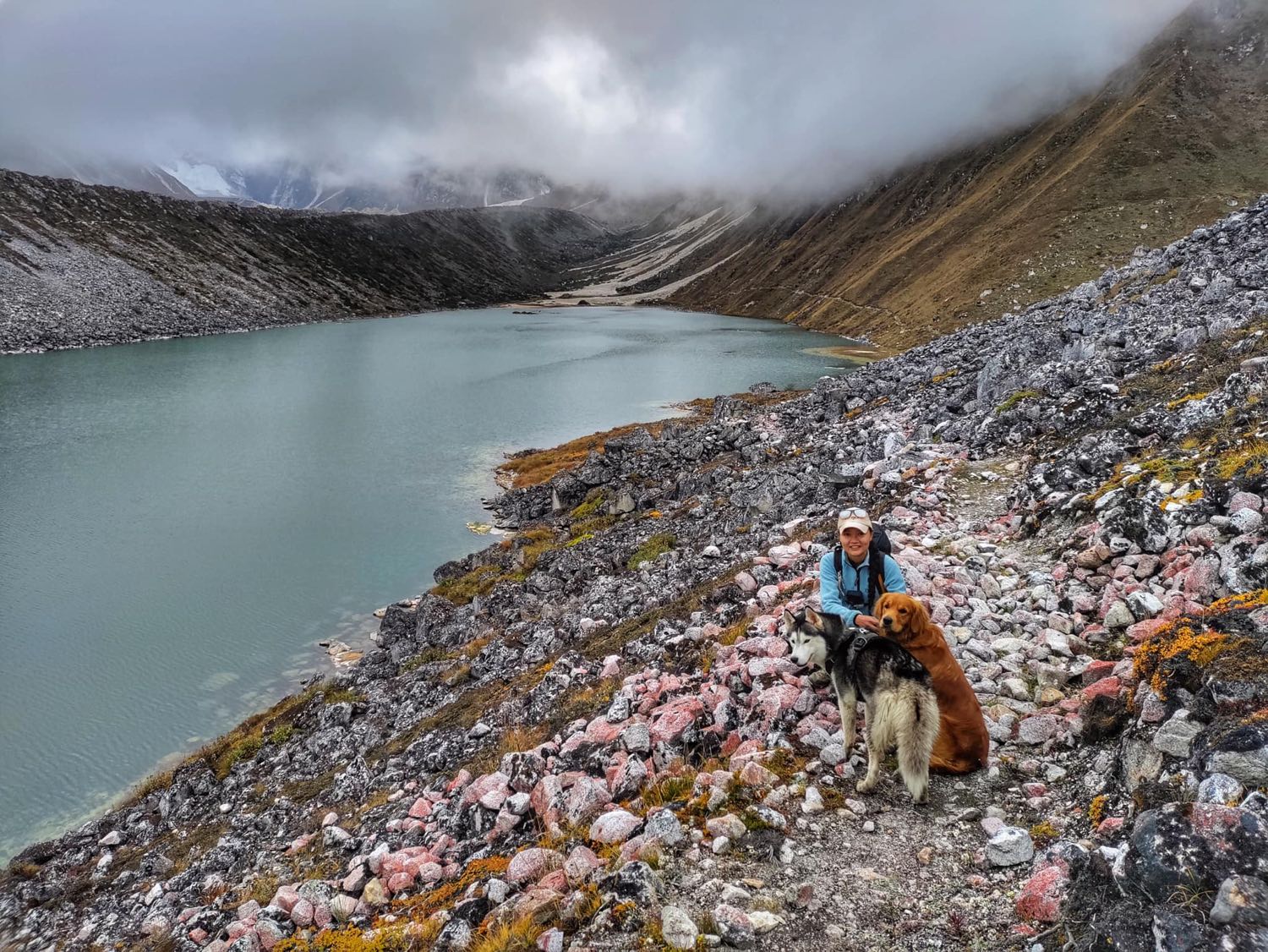
Wow. Great trip report. Much appreciated.
Thank you so much Rick 🙂
Great guide to plan the Manaslu Trek. Good luck with your restoration project on Landcruiser – they are bulletproof.
Glad my guide to Manaslu was helpful. Thank you so much, I will be updating my progress on the restoration of my Bundera.
This hike looks amazing
Yes, it is an amazing two week hike in Nepal – some even call it a new Annapurna Circuit!
Thanks for the excellent information!
You are welcome 🙂
I wish I read this before my trek to Manaslu. Have you been to Tsum? We did this trek combine with Tsum. Where are you taking your good boys next?
I have done Tsum as a separate trek with Fluffy, Charlie decided to stay and guard the house while we were away 🙂 Probably Kanchenjunga Circuit will be our next.
Did you pay any extra fees for the permits because of your extended itinerary? From what I’ve read, the initial permit lasts a week and there’s an extra permit for additional days. I am considering adding Serang Gompa to my itinerary, and upon reviewing the breakdown of the cost of agency, permits appears to be expensive. I appreciate it 🙂
Yes, I paid additional for a restricted area permit for my trip. It is not an extra permit for additional days, just extra fees only, but you have to pay it.
Your video looks promising. I’m having a hard time choosing between Manaslu and Annapurna. Have you experienced the Annapurna circuit? If you have, how does it differ from Manaslu?
Erik, thank you so much. I haven’t done Annapurna Circuit yet. I have plans to go for two weeks at the end of May.
Although I’ve heard many positive things about Annapurna, the only drawback is that this trail is congested with many hikers and jeeps.
It’s a bummer that you have to have a guide for this trek. In search of a hike that is roughly two weeks long that we can do independently this autumn. Any recommendation? Namaste
Manaslu requires a guide as a requirement. From what I understand, this route has easy access to Tibet and the Nepalese government wants to ensure that no activities of the free Tibet movement occur.
Annapurna Circuit or Everest with Gokyo via Chola Pass might be a good option for you to consider.
Wow that is stunning! How many hours a day did you hike? Did doggo ever get too tired and went on strike? I know mine would haha. Amazing scenery.
Thanks Mark! On average six hours with a some breaks in between during the day. They were tired at some points for sure, but never complained, we did it 🙂
Yen it is such an amazing adventure you have done with your good boys, wish I can do this someday. How long is the process to bring your pet in Nepal? I’m afraid we are not ready and acclimatized like you.
Thank you Leona, do a few day hikes in Kathmandu for acclimatization.
And you can analyze the performance of your fur baby! The process is not that complex and lengthy, here is a nice article with all the details about getting your dog into Nepal:
https://gatorandnuthin.com/requirements-for-getting-your-dog-into-nepal/
I read your post about Tsum, do you recommend doing Tsum and Manaslu or the itinerary you did over 18-19 days with side trips in Manaslu?
Initially we planned to do Tsum & Manaslu together, but it didn’t work out at the time. Side trips in Manaslu is I would recommend – the whole trail could be for you and your group only with little to no other trekkers.
Absolutely breathtaking ❤️
Thanks Emma
Have you done Annapurna circuit? Comparing between these two two treks, and also thinking of combining both treks in one trip if I can have enough time.
I haven’t done Annapurna circuit, but it is on my plan though, hopefully someday soon! If you have to choose between two I would recommend Manaslu.
However, if you have time then combining these two treks in one could be the best trekking combo.